Reunification Palace
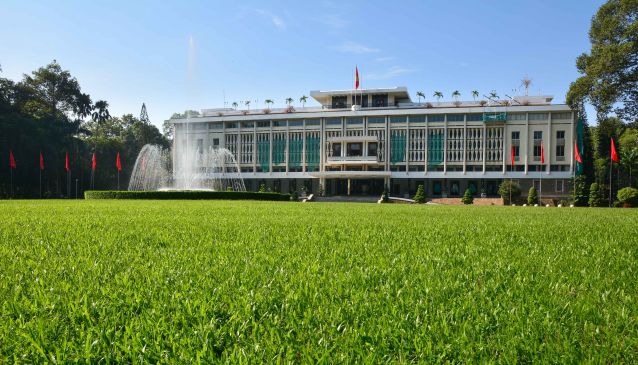
Downtown Saigon's modern skyline and fluorescent lights can be mesmerizing. They create a sense of wonder, astonishment and promote a kind of futuristic beauty to visitors. Luckily though, Saigon has retained a visible history in its streetscape that allows both visitors and locals can recall a time where architecture and design was a little more than some brilliant work from a few over-talented electricians. You don’t even have to go as far back as colonial times either. The glorious Independence Palace was completed in 1966, one of the climatic years of the Vietnam War, and has remained almost exactly the same since.
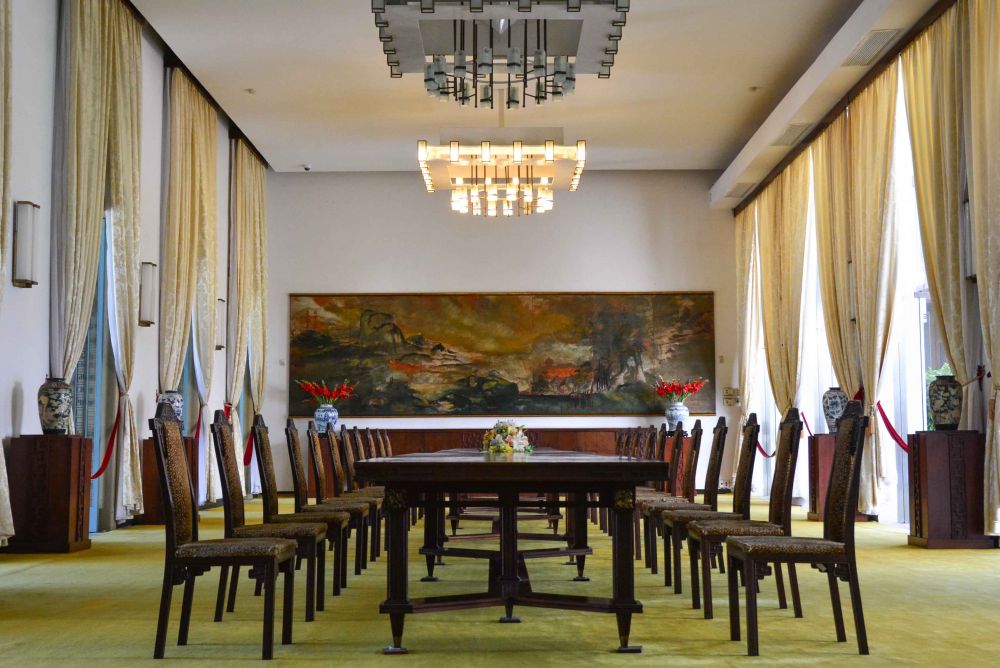
"The State Banquet Hall often hosted lavish dinner parties"
Independence Palace, sometimes referred to as Reunification Palace, was built upon the foundations of a previous one. An 1873-built French colonial mansion that went by the name of Governor's Palace (previously Norodom) was destroyed in 1962, bombed by defecting pilots from South Vietnam’s own air force! After its destruction, plans were quickly underway for a replacement to be built to show their strength and resilience.
For all intents and purposes, it’s now a dedicated museum, but one without too many relics or countless little plaques, that are surely designed to overload you with so many facts that you end up forgetting them in the end! The building itself and its decor are what’s on show here and it can feel like you’re in a time warp. You’ll possibly come here as part of a whirlwind city tour, but if you're alone and you need one, there are French and English speaking guides on site.
The most famous scene that played out here was the Fall of Saigon when NVA tanks rolled through the front gates on September 30th 1975, raised their flag atop the palace and claimed an end to the war and victory over the Republic of Southern Vietnam. Two of the same tanks that rolled into the grounds are now found just inside the gates with turrets directed towards the palace.
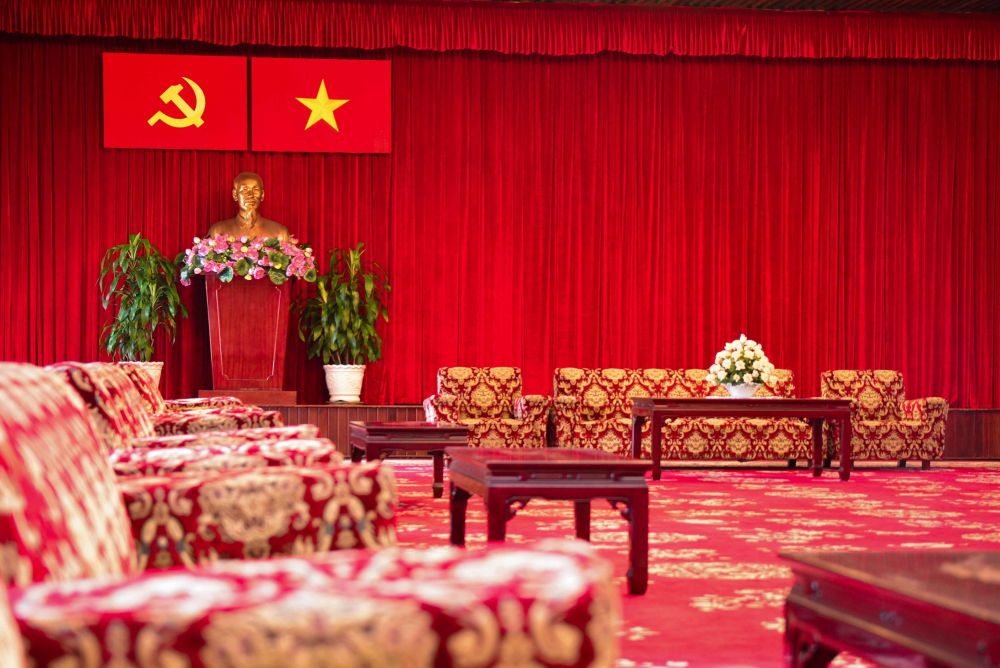
"Up to 500 dignitaries could have been hosted in the Conference Hall"
As it was used as the home and workplace for the president of the Republic of South Vietnam, Nguyễn Văn Thiệu, the grounds encompass large, lush and meticulously maintained surrounding gardens though after the fall of the city into NVA hands, it was no longer used for any parliamentary duties – though it occasionally hosts special events and sittings.
Once inside the foyer, one of the most important rooms is seen on your left - the State Banquet Hall. The opposite wing houses the parliamentary Cabinet Room and a 500 capacity Conference Room is located at the rear of this level. The rooms have a high level of detail and accuracy. Everything in the main rooms work in unison and try take you back in time to this tense period… albeit with a few less notepads and clicking pens.
The architecture from this period is so unique and the simple, clean and uncomplicated lines make the structure so captivating. Architect, Ngô Viết Thụ, had strong beliefs in maintaining eastern symbolism and feng shui when designing new buildings and used it as guidance in every corner of every room. The entire layout of the structure, when viewed from above, is the shape of the Chinese character for ‘good fortune’. The windows at the front of the building represent ‘truthful speech’ and the three horizontal strokes on the roof symbolize the mystical triad ‘humanity, wisdom and firmness of purpose.’
The second story houses the Conference Hall, the Presidential Reception Rooms, Ambassadors Chamber and in the west wing, the President’s living quarters surround its green and peaceful courtyard. Now that business is out of the way, the fun really starts upstairs…
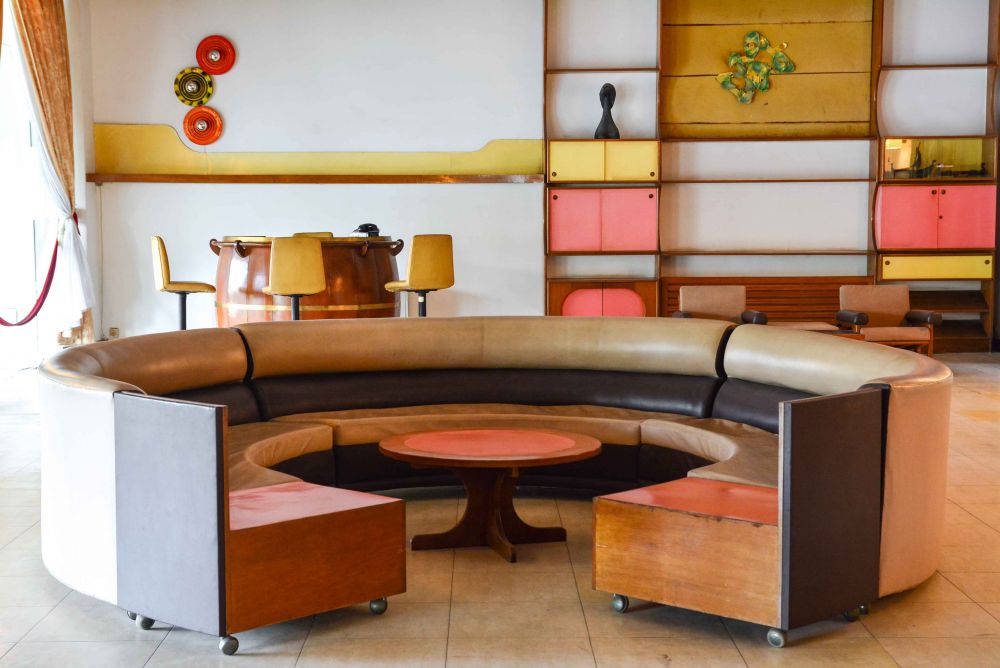
"Psychedelic ambiance in the Bar and Games Room"
The next level up is where the games room/bar is found. And it’s all far out in a very happening way! It’s definitely a room from the 60’s and the President would always make his friends and guests welcome. It was the place to have a scotch or two, relax and trade poker faces while sharing old war stories. It’s an ultimately groovy space which I’m sure didn’t look as kitschy then as it does to us now.
Apart from being housing a small cinema and projection room the top floor is where you'll also find the former First Lady’s reception room, where she was allowed to entertain dignitaries wives in relative peace. On top of the roof sits a small glass room which was originally designed to be some sort of meditation space though in true 60’s fashion, it would later become a ballroom and part-time nightclub.
Don’t forget to visit the bunker system downstairs. A cool respite at the end of a usually long and warm visit, the bunker system is always cool and breezy with the help of ventilation fans. Besides the curious kitchen and appliances you’ll also be able to wander former emergency communications and planning rooms, still with plenty old maps hanging above the aged and bulky electrical equipment of the time. The President even had his very own bed for using during those ‘bad weather’ times.
There are plenty of stairs but there are also a few elevators, toilets and a few drink vendors placed throughout the building for your convenience. If you enjoy historical decor, architecture or you just want a quick peak into the time of a western backed democracy in Vietnam then pen Independence Palace towards the top of your list.
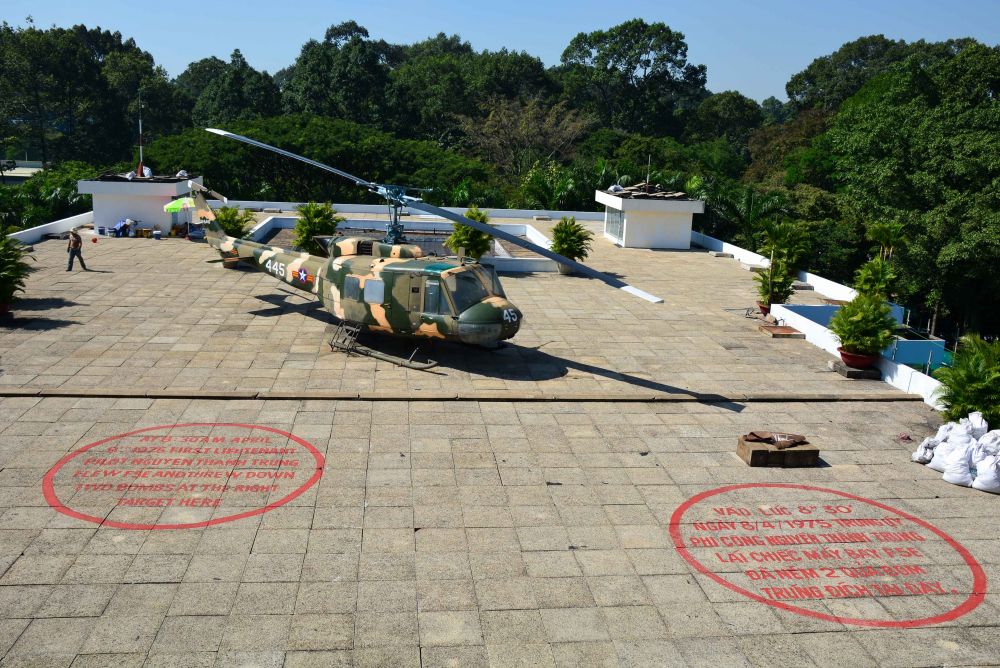
"Two bombs were dropped onto the building towards the end of the war"